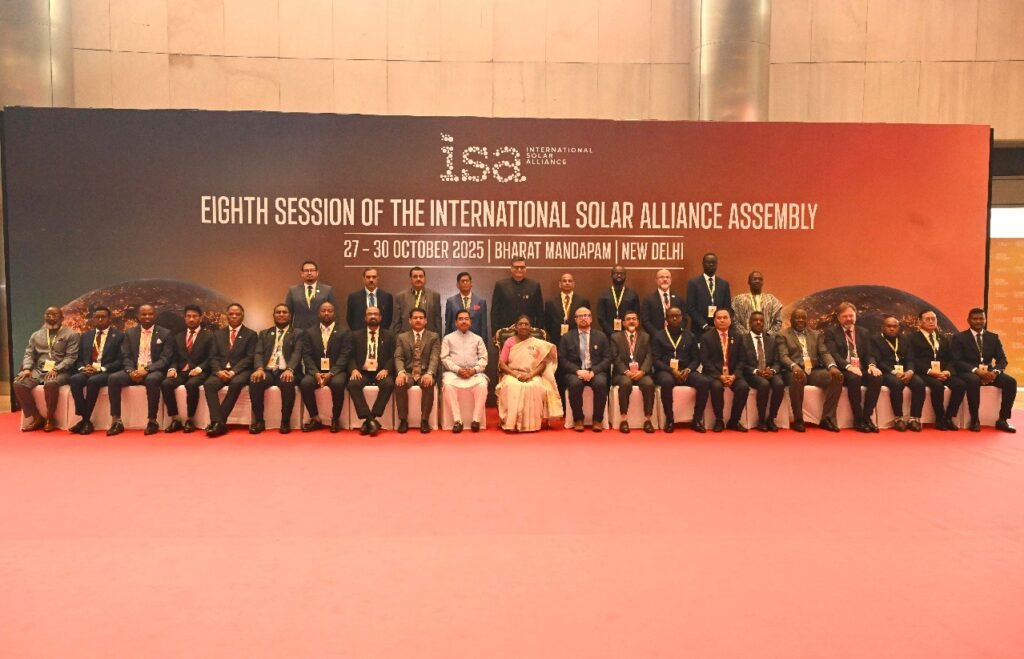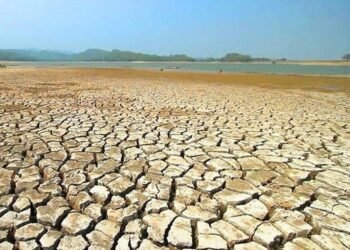NEW DELHI: The International Solar Alliance (ISA) on Tuesday signaled a new phase in global solar cooperation by expressing openness to China’s membership, a move that could bring together nearly 90 per cent of the global solar industry under one framework. Speaking at the opening day of the eighth ISA Assembly in New Delhi, the organization’s Director-General said that the entry of China and Russia, if realised, would give the alliance near-universal representation across the world’s major energy markets.
The statement came as President Droupadi Murmu inaugurated the four-day assembly at Bharat Mandapam, becoming the first Indian head of state to address the forum. Her address underscored the ISA’s expanding role in India’s diplomatic outreach and its emergence as a cornerstone of global climate cooperation.
Union Minister for New and Renewable Energy Pralhad Joshi highlighted that the ISA is moving steadily from ambition to action, reflecting a decisive shift from policy discussions to on-ground delivery. He said the institution is becoming robust, simple, analytical, and implementation-focused, driven by the need to make clean energy affordable and inclusive. Joshi also announced that the Africa Solar Facility, managed by Africa50, is mobilising funds for distributed solar projects across the continent projects he said are transforming lives across ISA member countries. France reinforced its support with a financial contribution of 150,000 euros to the facility for 2025. Initiatives such as the STAR-C Network are helping integrate digitisation and artificial intelligence into the renewable sector, building what the minister described as a “Silicon Valley of solar for the Global South.”

A major highlight of the assembly was the announcement of SUNRISE (Solar Upcycling Network for Recycling, Innovation and Stakeholder Engagement), an initiative designed to promote the recycling of critical minerals from solar panels and electronic waste. As countries like India continue to add 25–30 gigawatts of solar capacity each year, the retired panels two decades from now will hold enormous potential for nickel, cobalt, and lithium recovery.
The initiative aims to create business models that can make recycling economically viable and environmentally essential, turning waste into a strategic resource. The programme also addresses the growing geopolitical challenge of China’s dominance in the critical minerals supply chain. By fostering innovation and circularity, SUNRISE seeks to reduce dependence on limited global sources, strengthen supply resilience, and encourage sustainable industrial growth across emerging markets.
The Geopolitical Dimension of Solar Expansion
The ISA is also advancing its flagship “One Sun, One World, One Grid” (OSOWOG) initiative, aimed at linking solar grids across regions from Southeast Asia to South Asia, onward to West Asia, Europe, and Africa. This interconnected network would reduce reliance on battery storage and make renewable power more consistently available worldwide. A new programme on regional interconnection, to be launched next year alongside the India AI Impact Summit, is expected to accelerate this vision by integrating grid networks and advancing smart energy management systems.
The upcoming 200-million-dollar Africa Solar Facility will serve as a risk-mitigation fund to attract investment from global solar companies. The ISA is collaborating with Nigeria’s sovereign wealth fund to design financial instruments that encourage mini-grids and off-grid solar solutions, bringing clean energy to underserved communities. Such initiatives, combined with growing support from countries and development partners, signal a shift toward solar-led economic transformation, particularly across the Global South.
The assembly’s discussions unfolded against the backdrop of a volatile global energy market. With Western sanctions on Russian oil and supply disruptions from geopolitical rivalries, solar energy’s role as a cost-effective and politically neutral option has gained renewed urgency. The ISA leadership noted that the economics of solar power, rather than politics, is driving the clean energy transition. Solar and its storage are now among the cheapest options for all countries, a reflection of how economic logic is increasingly shaping climate action.
Toward a Shared Solar Future
Launched by India and France in 2015 on the sidelines of the Paris Climate Conference (COP21), the ISA now counts 125 member countries. With potential participation from China and Russia, it could soon represent nearly the entire global solar value chain. The 2025 session of the Assembly demonstrated not just the growing weight of the alliance but its evolution from dialogue to delivery from setting ambitious goals to implementing large-scale, practical solutions.
As the world enters a decisive decade for climate action, the International Solar Alliance stands at the centre of a new kind of diplomacy one driven by technology, sustainability, and shared sunlight. The decision to welcome China, launch circular initiatives like SUNRISE, and expand energy access through Africa and Asia reflects a future where the sun could become both a source of power and peace.
In a fragmented world battling climate disruptions and geopolitical rivalries, the ISA’s quiet but steady rise shows that the path to sustainability runs not just through innovation, but through cooperation. The alliance’s message is clear: energy independence in the 21st century will not come from competition, but from connection.
-Dr. Shahid Siddiqui | Follow on X @shahidsiddiqui





















